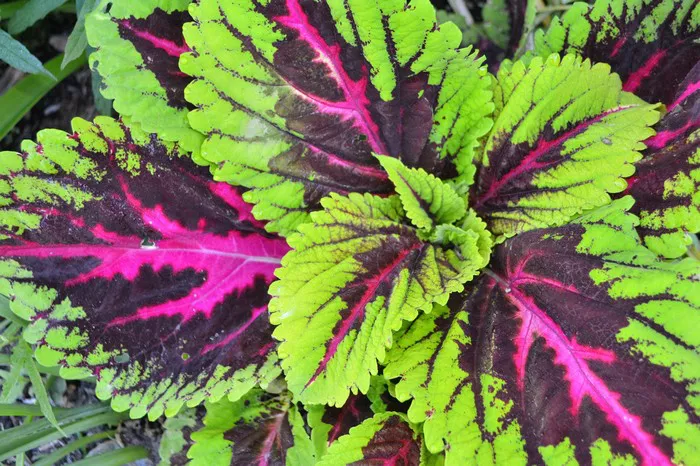Coleus plants, known for their vibrant foliage and striking colors, have captivated gardeners and horticulturists for generations. Beyond their aesthetic appeal, these plants possess an intriguing lifespan that piques the curiosity of enthusiasts and researchers alike. In this article, we embark on a journey to unravel the mysteries surrounding the longevity of coleus plants, delving into their life cycle, environmental factors influencing longevity, and strategies for promoting sustained growth and vitality.
Understanding the Life Cycle of Coleus Plants
Before delving into the longevity of coleus plants, it’s essential to grasp their life cycle. Coleus, scientifically classified under the genus Plectranthus scutellarioides, is a member of the Lamiaceae family. These herbaceous perennial plants are native to tropical regions of Africa, Asia, Australia, and the Pacific Islands. In cultivation, coleus are primarily grown as annuals or tender perennials, depending on climate and environmental conditions.
Coleus plants exhibit a distinct life cycle characterized by germination, growth, flowering, and senescence. Germination typically occurs within 7-14 days under optimal conditions, with seedlings emerging as small, delicate shoots bearing the plant’s characteristic colorful foliage. As coleus plants mature, they undergo vigorous vegetative growth, with foliage becoming increasingly lush and vibrant.
Under favorable conditions, coleus may produce flowers, although this is less common in cultivated varieties prized for their foliage. When coleus do flower, the blooms are often inconspicuous, with purple, blue, or white hues. Following flowering, coleus plants may enter a phase of senescence, during which growth slows, and foliage may exhibit signs of decline.
Factors Influencing Longevity
The longevity of coleus plants is influenced by a myriad of factors, ranging from environmental conditions to cultural practices. Understanding these factors is crucial for maximizing the lifespan of coleus and ensuring optimal growth and vitality.
1. Environmental Conditions: Coleus thrive in warm, humid environments with well-draining soil and ample sunlight. While they can tolerate partial shade, prolonged exposure to direct sunlight may cause leaf scorching, reducing plant longevity. Additionally, coleus are sensitive to cold temperatures and frost, which can damage foliage and inhibit growth.
2. Soil Quality: Soil quality plays a significant role in the longevity of coleus plants. They prefer moist, fertile soil with good drainage to prevent waterlogging, which can lead to root rot and other diseases. Amending soil with organic matter such as compost can improve fertility and soil structure, promoting healthy root development and sustained growth.
3. Watering: Adequate watering is essential for coleus plants, as they have moderate water requirements. Overwatering can lead to root rot, while underwatering can result in wilting and leaf drop. Maintaining consistent soil moisture levels is key to promoting longevity and preventing stress-related issues.
4. Fertilization: Proper fertilization can enhance the longevity of coleus plants by providing essential nutrients for growth and development. A balanced fertilizer with equal parts nitrogen, phosphorus, and potassium (NPK) can support healthy foliage and vibrant colors. However, excessive fertilization can lead to nutrient imbalances and foliage burn, so it’s essential to follow recommended application rates.
5. Pest and Disease Management: Coleus are susceptible to pests such as aphids, spider mites, and whiteflies, as well as diseases like powdery mildew and leaf spot. Regular monitoring and prompt intervention are critical for controlling pests and diseases and preventing damage to foliage. Organic pesticides and fungicides can be used as a last resort, but cultural practices such as proper sanitation and crop rotation are often effective preventative measures.
Strategies for Promoting Longevity
While the lifespan of coleus plants can vary depending on environmental conditions and cultural practices, several strategies can help promote longevity and sustained growth.
1. Selection of Varieties: Choosing coleus varieties known for their vigor, disease resistance, and adaptability to local climate conditions can increase the likelihood of long-term success. Look for varieties with robust foliage and vibrant colors that are well-suited to your specific growing environment.
2. Optimal Planting Time: Planting coleus at the appropriate time can enhance their longevity and resilience. In temperate climates, coleus are typically grown as annuals and planted after the threat of frost has passed in spring. In tropical or subtropical regions, coleus can be grown year-round, but planting during the cooler months can help mitigate heat stress.
3. Proper Maintenance: Regular maintenance practices such as pruning, deadheading, and removing damaged or diseased foliage can promote airflow and reduce the risk of pest and disease infestations. Pruning can also encourage branching and compact growth, resulting in a more robust and visually appealing plant.
4. Mulching: Applying a layer of organic mulch around the base of coleus plants can help conserve soil moisture, regulate soil temperature, and suppress weed growth. Organic mulches such as shredded bark or compost also gradually break down, enriching the soil with nutrients and improving overall soil health.
5. Overwintering: In regions where coleus are grown as tender perennials, overwintering can help prolong their lifespan and ensure their survival through the colder months. Before the onset of winter, coleus can be dug up and potted or brought indoors to a sunny window or greenhouse. Providing adequate light, warmth, and moisture during the winter months can help coleus plants thrive until they can be reintroduced outdoors in spring.
Conclusion
In conclusion, the longevity of coleus plants is influenced by a multitude of factors, including environmental conditions, cultural practices, and genetic traits. By understanding the life cycle of coleus, identifying key factors influencing longevity, and implementing strategies for promoting sustained growth and vitality, gardeners and horticulturists can maximize the lifespan of these beloved ornamental plants. Whether grown as annuals or tender perennials, coleus continue to enchant and inspire with their vibrant foliage and enduring beauty.


